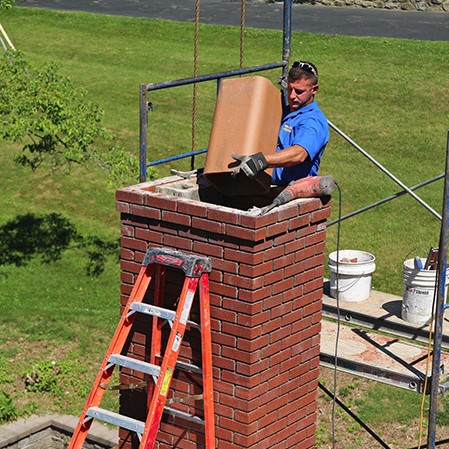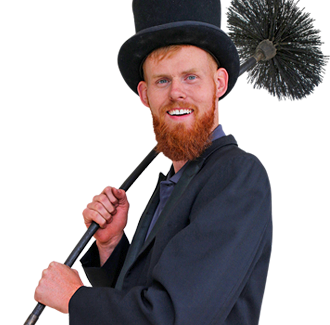Is There A Difference Between Dampers And Flues?
Chimneys and fireplaces have a lot of terminology that can get confusing. Today, we want to talk about the difference between the fireplace damper and the chimney flue. The two are somewhat connected and work together, but there are some important differences.
 What is a damper?
What is a damper?
Dampers are present on most chimney/fireplace systems. They sit just above the firebox (where the logs are burned) and under the flue (see below) and have a handle of some kind that allows you to open and close them. Fireplace dampers are plates that control the flow of air into and away from the firebox.
What is a flue?
The chimney flue is the pipe or tubing that runs up the inside of the chimney to transport smoke and toxins created during combustion. The flue is a major component of drafting and as such it must be the right size for the fireplace it’s working with. Flue liners – chimney liners – are inside the flue for system protection from heat and acidic compounds.
Dampers and flues are pretty much “out of sight, out of mind” – until something goes wrong. Both components must be in good shape to operate safely and efficiently. Here are some common issues with dampers and flues.
Rusted or broken damper
If your damper is heavily rusted or somehow broken, it may not be able to fully open. This means that smoke and toxins during a fire in the fireplace won’t be able to efficiently rise into the flue and exit the house.
It also means your damper might not form a tight seal when closed, allowing air from outside the home to get into the temperature-controlled air inside. Finally, a damper that won’t completely close could be an invitation for bugs or small animals to enter your home.
Flue obstructions
Another important chimney component is the chimney cap. Full-width custom chimney caps sit at the top of the exterior chimney and prevent debris from nearby trees as well as small animals and their nesting materials from infiltrating your flue.
Obstructions in a chimney flue will cause smoke to draft sluggishly and may send it and deadly carbon monoxide into your home. Flue blockages also will make it harder to start fires and keep them burning aggressively.
Creosote in the flue
Creosote is a byproduct of smoke condensation inside your flue. Every time you burn a wood fire, creosote is formed. Highly volatile and flammable, creosote is the cause of most chimney fires every year in the United States.
Creosote can present as a flakey, puffy, sticky or solid substance. In all its forms, it should be professionally cleaned out of your flue annuallyt by a CSIA-certified chimney sweep.
 Flue liner damage
Flue liner damage
Flue liners commonly are made of stainless steel, clay tiles or a cast-in-place compound. Over the years, any of these materials can suffer damage and begin allowing toxic gases to seep into your home.
Damaged liners also leave the chimney masonry and home building materials vulnerable to smoke damage and fire.
The best way to make sure your damper and flue are in great shape and safe to use is with a thorough yearly inspection, annual chimney cleaning and repair work scheduled when it’s needed.
Hudson Valley Chimney of Poughkeepsie, NY, provides all the professional services you need for every part of your chimney. Call us at (845) 471-1071 to learn more about chimney sweeping, inspections and repair work.








